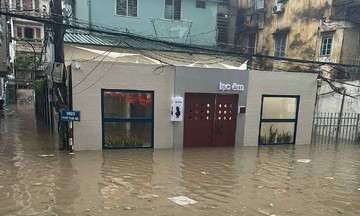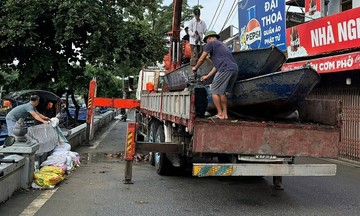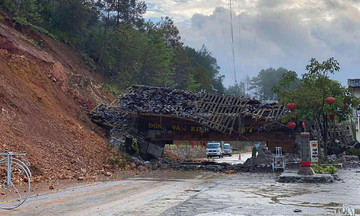When the fields are submerged in alluvial waters, it's harvest time in the Mekong Delta for produce available only once a year. The flood season, spanning from September to November, is not just a natural phenomenon, but a "gift season," enriching meals and shaping a distinctive culinary culture.
"For the people here, the flood season evokes memories of family meals with braised fish and sour soup made from ingredients found right in the fields and rivers," shared Le Tien, a native of the Dong Thap Muoi region.
Here are 6 delicacies that define the culinary essence of the Mekong Delta's flood season.
Water lily
During the flood months, upstream communes in Tay Ninh province like Moc Hoa, Tan Hung, and Vinh Hung are inundated, marking the time when water lilies bloom abundantly across the fields.
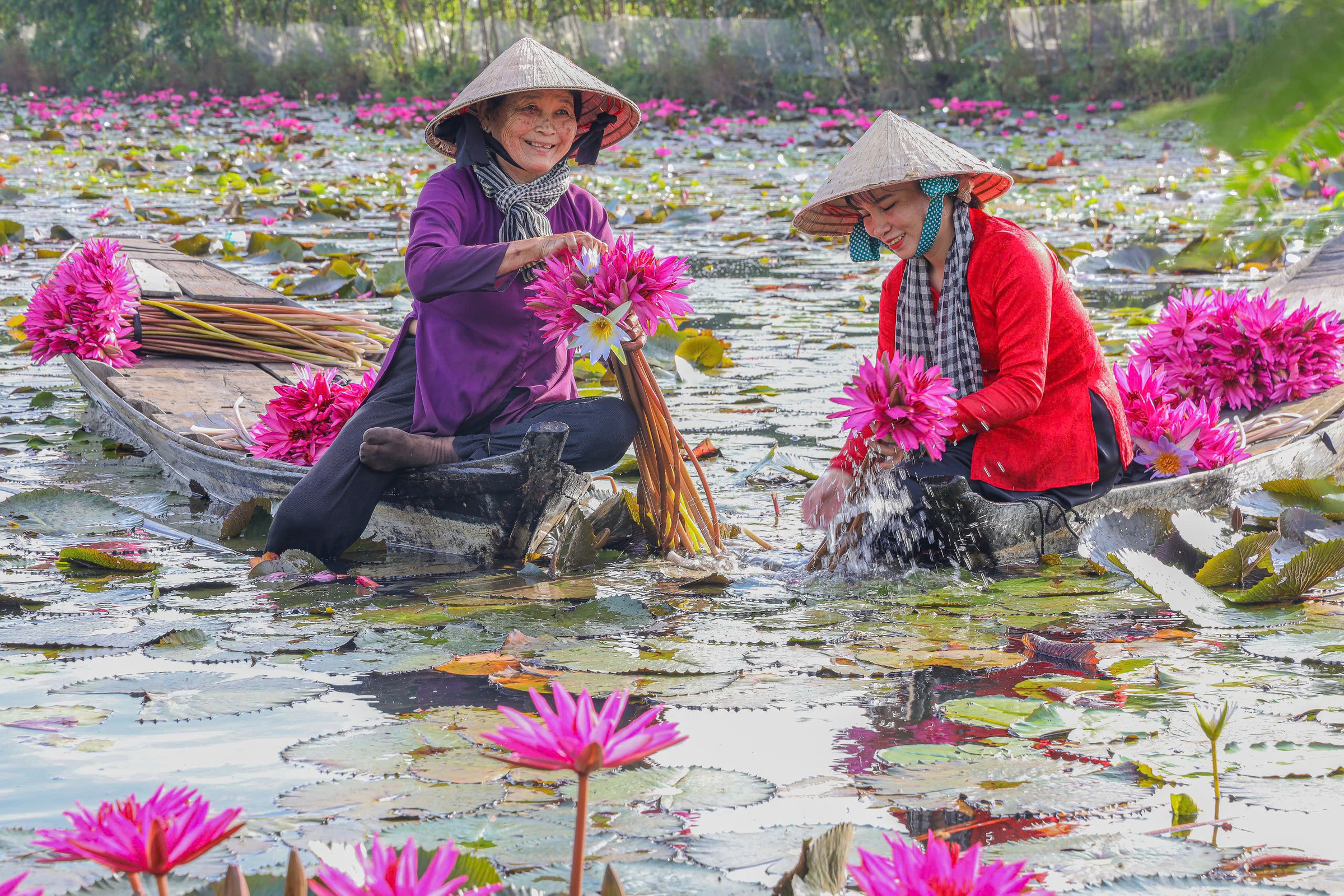 |
Harvesting water lilies in a flooded field in Tay Ninh. Photo: Le Tien |
Harvesting water lilies in a flooded field in Tay Ninh. Photo: Le Tien
The fields are primarily filled with wild water lilies, with purple and white blossoms and stems 3-6 m long. Locals call them "ghost lilies" because they tend to bloom at night and wilt and submerge as the sun rises, requiring early morning harvesting.
The water lily stem is succulent and crisp, with the white part near the root considered the tastiest. They can be eaten raw, added to sour soup, but are best enjoyed fresh, dipped in braised fish sauce.
Ca linh (small fish)
Ca linh are tiny fish, about 3 cm long, the size of an adult's finger. During flood season, people living along rivers and canals catch them using various methods: dip nets, fishing nets, scoops, cast nets, and gillnets.
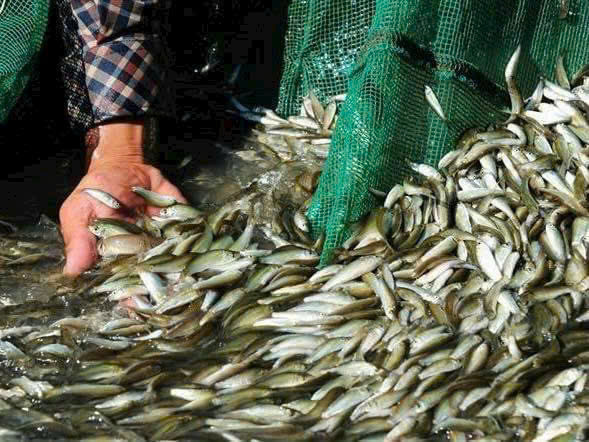 |
Ca linh caught during flood season. Photo: Song que |
Ca linh caught during flood season. Photo: Song que
Several types of ca linh exist, primarily living in the wild and appearing only seasonally, not farmed. Previously an inexpensive fish associated with simple meals in the Mekong Delta, young ca linh are now popular and sold widely in An Giang and Dong Thap markets for about 180,000-280,000 VND/kg (cleaned), becoming a delicacy to treat visitors. Ca linh are prepared in various dishes like hotpot, braised with sugarcane, and fermented fish paste.
In 2024, ca linh hotpot with sesbania blossoms was ranked 53rd among the world's 57 best fish dishes by Taste Atlas.
Water chives
Water chives are an aquatic plant growing wild in the flooded canals and ponds of the Dong Thap Muoi's acidic soil region. Unlike land chives, water chives are a wild vegetable abundant during flood season, from July to August. To harvest them, people wade into the fields, submerge themselves, locate the chives by hand, loosen the soil, and pull up the entire plant, roots and all.
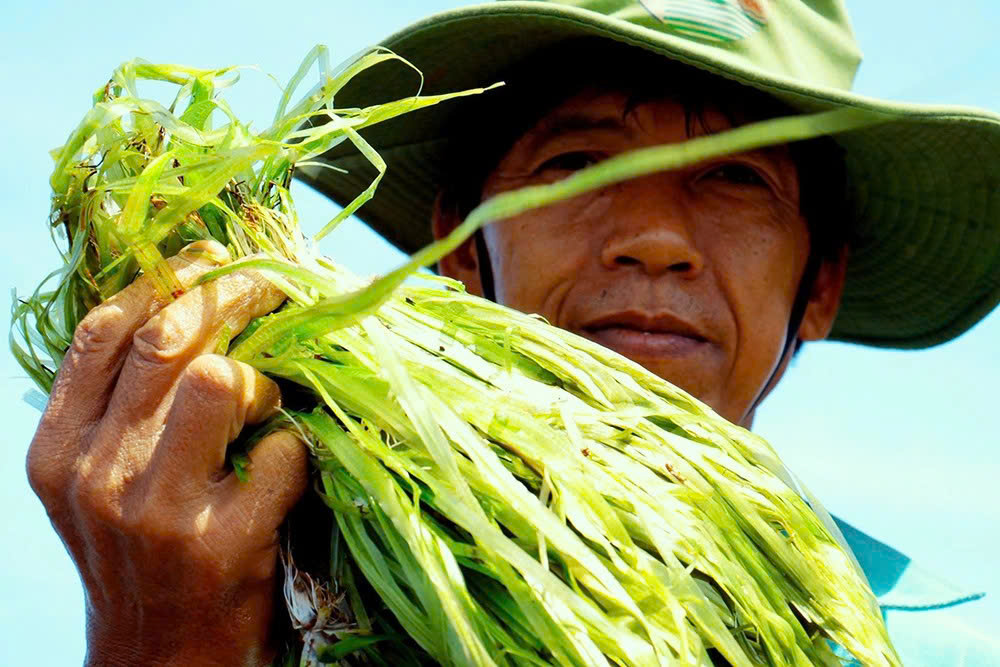 |
Water chives. Photo: Hoang Nam |
Water chives. Photo: Hoang Nam
Water chives are eaten raw as a vegetable, dipped in braised fish or meat sauce, but are best enjoyed with braised fish sauce.
Abundant in the Dong Thap Muoi area across Dong Thap, Long An, and Tien Giang provinces, they can be found in local markets or sold along roadsides for about 20,000 VND/kg.
Field rat
Field rats typically burrow in field banks and dikes, using them as shelter, breeding, and thriving. They are present year-round but are most numerous during rice harvest or flood season.
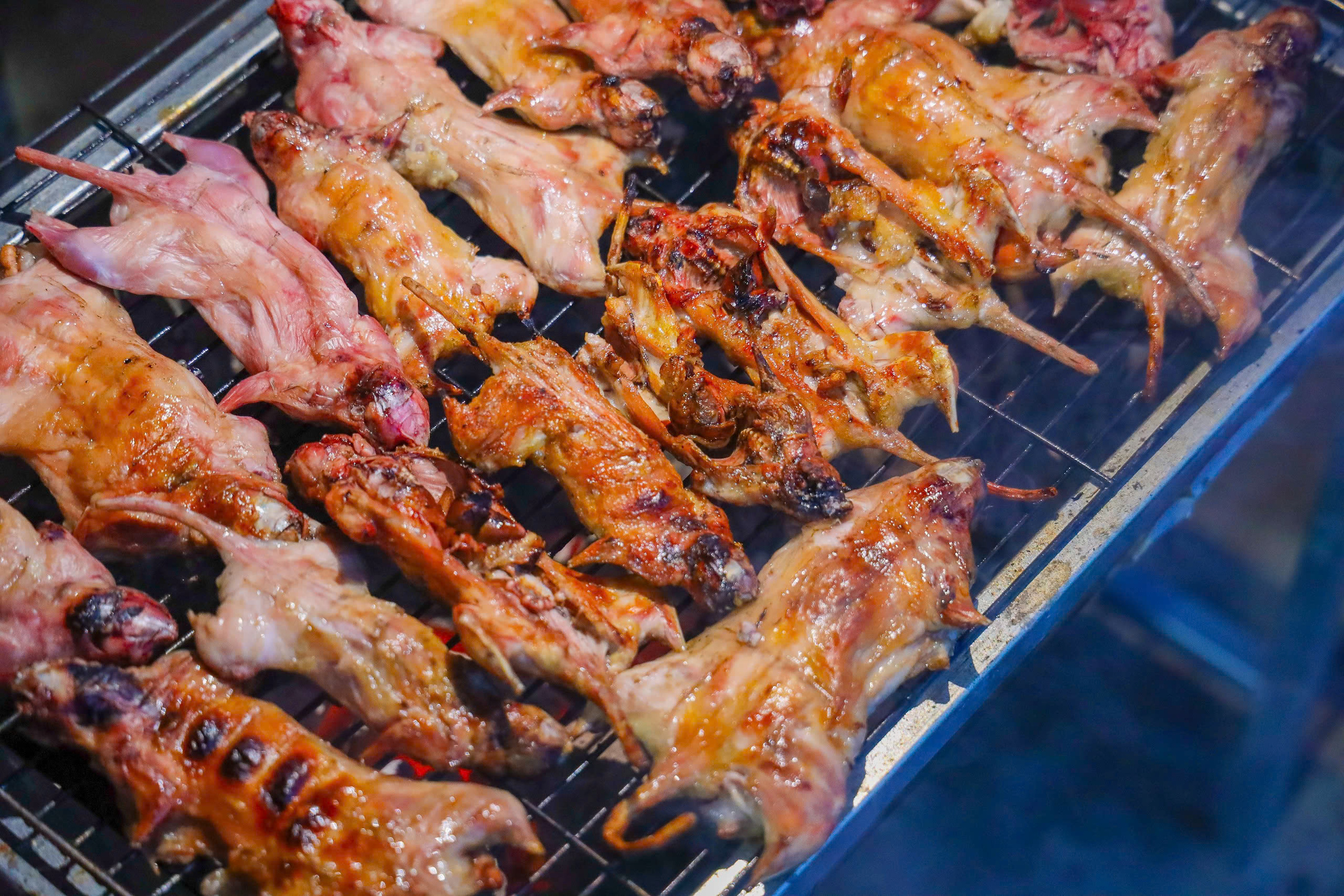 |
Grilled field rat. Photo: Le Tien |
Grilled field rat. Photo: Le Tien
After catching the rats, people in the Mekong Delta clean them in various ways, commonly by smoking or scalding them in boiling water, followed by washing with salt and alcohol, and then draining. The cleaned rats are prepared in various dishes: roasted in a clay oven, grilled with salt and chili, braised in coconut milk, stir-fried with lemongrass and chili, stewed like dog meat, deep-fried, or rolled and stir-fried. However, for a rich, fragrant flavor, they are often grilled with fermented tofu.
Field rat dishes are now on the menus of some restaurants, tourist spots, and pubs across the Mekong Delta, becoming a favorite among many diners.
Sesbania blossoms
Sesbania is a legume with a 2-3 month blooming period, peaking during flood season. This low-maintenance plant produces vibrant yellow flower clusters, typically blooming from late night to early morning. To maintain freshness and fetch a good price, locals harvest them by lamplight at midnight before the buds fully open.
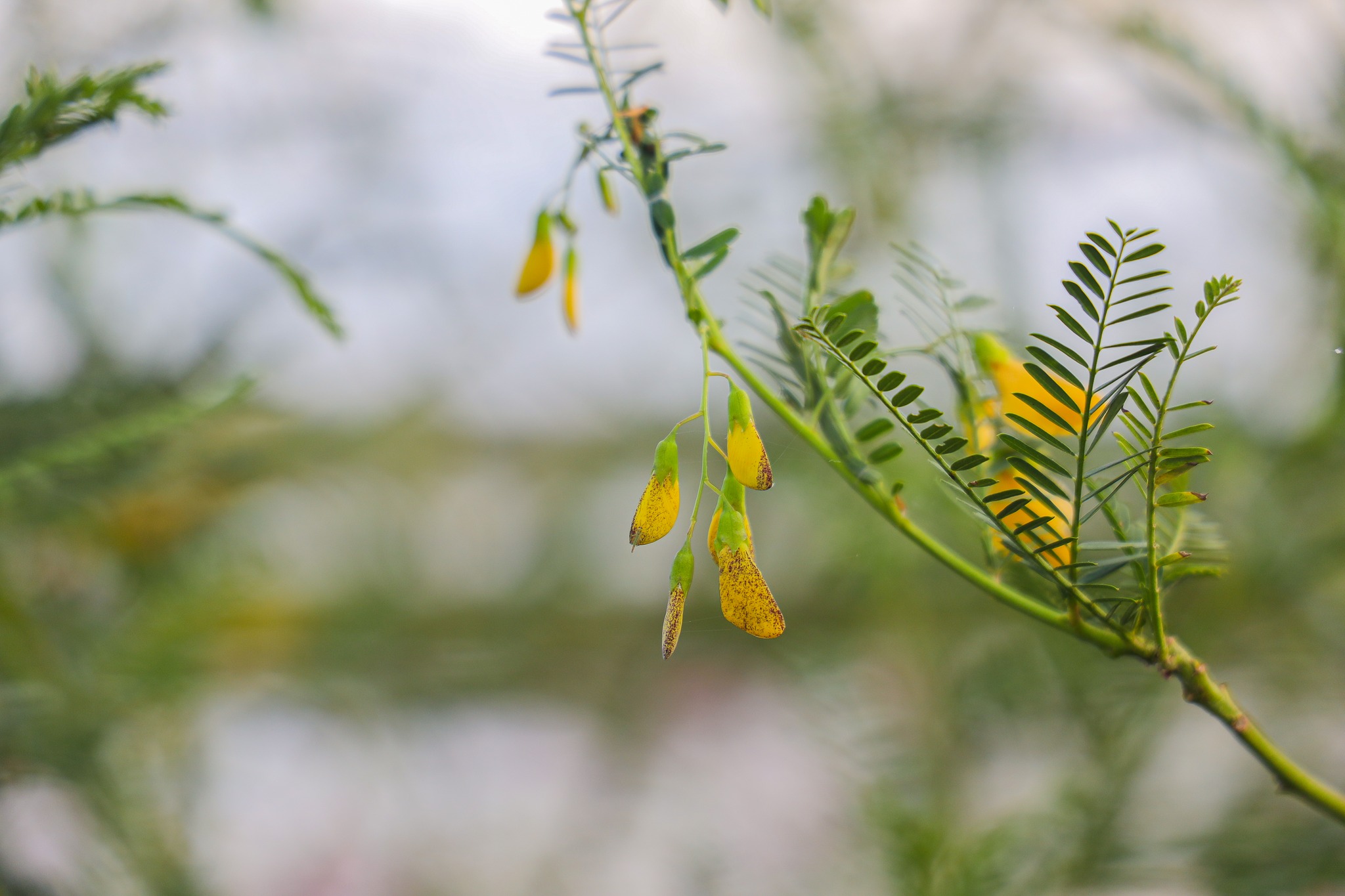 |
Sesbania blossoms. Photo: Le Tien |
Sesbania blossoms. Photo: Le Tien
Sesbania blossoms have a unique flavor: initially slightly bitter, but with a sweet and nutty aftertaste. Besides being delicious, they are also nutritious and used in various Mekong Delta dishes like sesbania blossom salad with freshwater shrimp, sour soup with ca linh, and sesbania blossom crepes.
Ca na fruit
The Mekong Delta's flood season not only brings abundant seafood but also coincides with the harvest of various fruits, including ca na. This 10-25 m tall tree was initially planted to reinforce riverbanks and retain soil during floods, with its fruit later utilized for additional income.
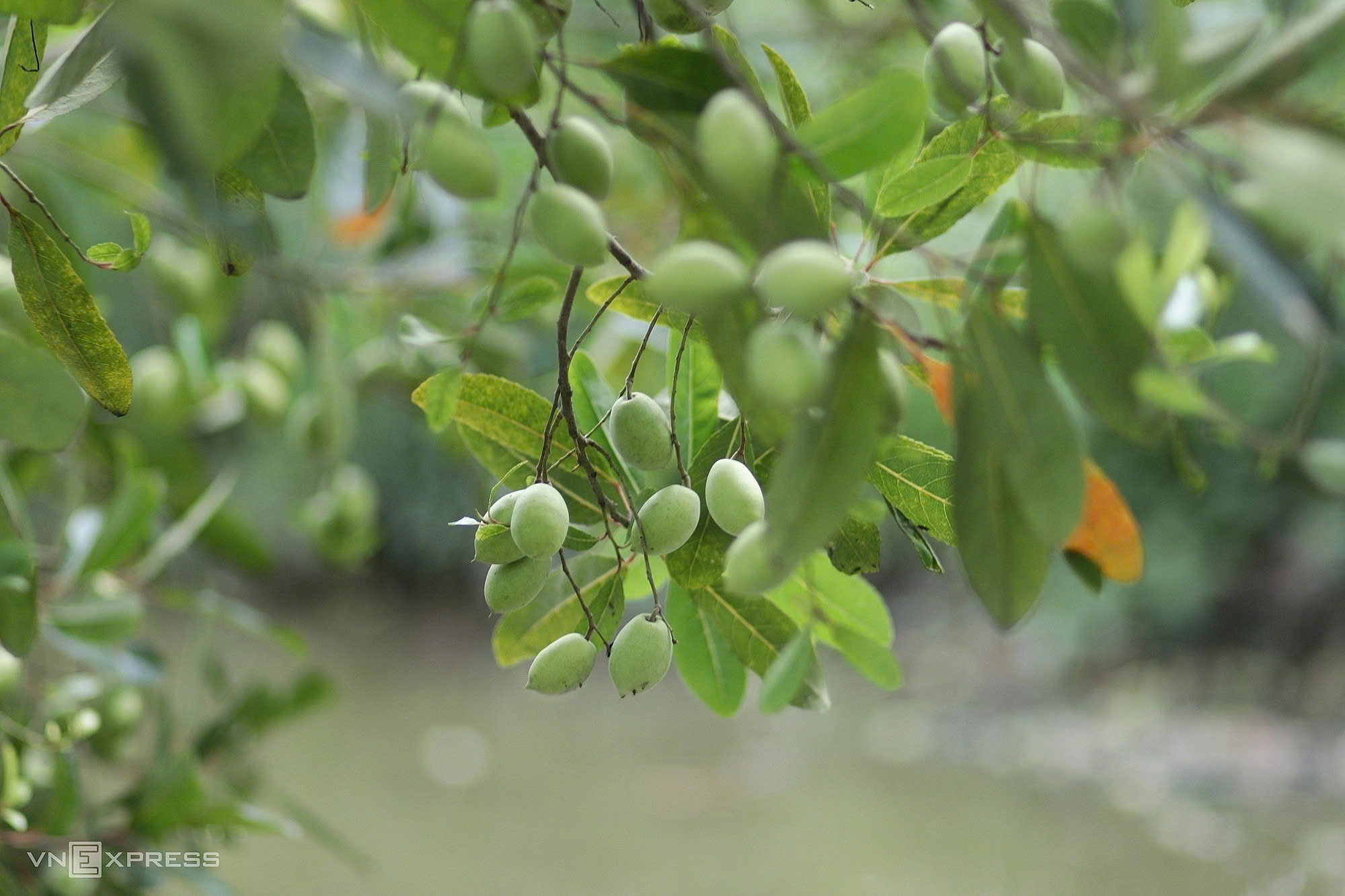 |
Ca na fruit. Photo: Nguyen Tan Dat |
Ca na fruit. Photo: Nguyen Tan Dat
The oval-shaped, smooth-skinned ca na fruit is about 3-4 cm long. During flood season, the ripe fruit turns light yellow, with a slightly tart and mildly sour taste and a subtle aroma.
Fresh ca na and its processed products are quite common in provinces like Dong Thap, Tay Ninh, and An Giang. Thai ca na is now predominantly cultivated due to its larger size, less tartness, higher yield, earlier and year-round harvest.
During harvest, people gather ca na using various methods like paddling boats, using baskets, ladders, hooks, or climbing large trees. The fruit is then crushed and mixed with salt and chili or candied for a snack.
Tips for visitors
For a complete flood season culinary experience, visit An Giang, Dong Thap, and Long An provinces from September to November.
Chau Doc Market (An Giang): Considered the "capital" of fermented fish products and flood season delicacies, visitors can find fresh ca linh, sesbania blossoms, and various prepared products.
Eco-tourism areas: Tan Lap Floating Village (Long An) and Tram Chim National Park (Dong Thap) often have restaurants serving a full range of seasonal specialties.
Local experiences: Taking a boat into the flooded fields, hand-picking water lilies and sesbania blossoms, and enjoying dishes prepared by locals will create lasting memories.
Tuan Anh







